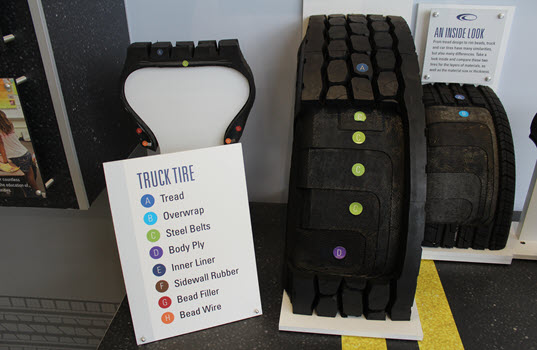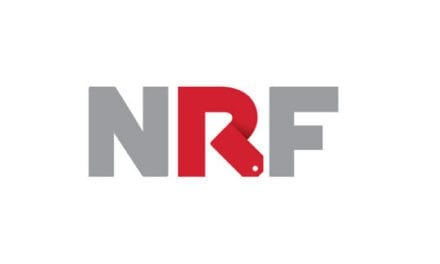Doug Siefkes for Cooper Tires
If the tread is the face of the tire, then the casing is the heart that makes the tire live. That’s how Phil Mosier, Cooper Tire manager of commercial tire development sees the importance of the casing.
“Tread pattern and the cost of the tire get a lot of attention from fleet managers,” says Mosier. “But it’s the casing that is often the unsung hero in a commercial tire. It’s the foundation of the tire and what allows you to receive multiple retreads. It’s the true driver in lowering your overall cost of ownership. I always advise fleets to look at the tire, then look even closer at the foundation of the tire. The casing.”
According to Mosier, retreading tires continues to remain one of the best ways for fleets to reduce tire-related costs. “We want our customers to be more profitable on the road, which is why we spend as much time as we do designing our casings,” he says. “Our primary objective is to produce tires that will provide a low cost of ownership, and we believe the quality of our casings plays a large role in helping us achieve that.”
With advancements in technology, casing designs and compounding formulas over the years, tires have never been more ‘retreadable’ as they are today. Roughly half the commercial tires on the road are retreads according to the United States International Trade Commission.
According to Mosier, one of the best gauges in determining casing quality is the warranty attached to the tire. “Twenty years ago, the typical warranty for a commercial tire was about 4 years, with one retread,” he says. “Now it’s up to 7 years and multiple retreads. The warranty is really based on data analysis and the confidence the tire manufacturer has in the casing and the retreadability of the tire.”
Mosier says the structural integrity of the tires’ casing is always top of mind when designing a new tire to bring to market. “Roughly 75% of what you pay for in a tire is in the casing,” he says. “We’ve gone with a little wider tire, and thus casing, in our drive and steer positions—that does a couple things. It gives better traction and more miles to removal since there is a bigger footprint, and it gives a wider width in the casing after it’s buffed for retreading. This allows our casing to hold up better for multiple retreads while supporting premium retread widths that deliver enhanced on-road performance.”
The core areas of the casing are the innerliner, sidewall, bead area, and belt package. “Our team is constantly tinkering with the compounds and materials used in the casing—little things make a big difference. The quality of the innerliner for example, can vary across the board. The best innerliners help lower permeability—or the slow diffusion of air out of the tire. And, we’re seeing the use of lightweight steel now in the belt package which not only provides further protection to the casing from punctures, but it provides for a lighter tire—and weight is always an important consideration for fleets.”
Most of the top tier tires feature three or four-steel belt designs. “We go with four belts, which we feel helps the integrity of the tires’ casing,” says Mosier. “That fourth belt gives an added layer of confidence and protection—especially against stone drilling and punctures. Rust is a tire’s enemy and the extra steel belt helps protect the belts below.”
The company’s design team uses more than a dozen rubber compounds in its casings, each designed for a specific purpose to enhance overall performance. “We’ve got a lab full of compounds and mixtures we can use—polymers, carbon black and silica—The Importance of the Tire Casiongo give the right performance characters we’re after,” says Mosier. “The right combination allows us to develop durable casings and reduce rolling resistance.”
While most fleets retread, others don’t. They sell their casings. “The beauty of having tires with quality casings is that even if you decide not to retread a tire, there is a market for your casing,” says Mosier. “Retreaders will pay you a pretty penny for your casing as long as it is in good condition. Even if you don’t plan on selling your casings, it’s a good idea to see what a retreader is willing to pay for it. That, right there, will tell you what the quality of the casing you have is.”
According to Mosier, retreaders won’t accept tires that can’t be safely retreaded. They thoroughly inspect tires before they are retreaded to make sure the casing is in good condition. And, oftentimes, retreaders will think twice about accepting specific tire brands based on the reputation of their casings. “At the end of the day, a retreader is accountable for the tire that they retread, so they aren’t going to retread a tire if they don’t trust the casing,” says Mosier.
Making Sure your Casing Lives the Longest Life Possible
In order to reap the cost saving benefits running retreaded tires can provide, or selling the casing, managing a proper tire maintenance program is just as important.
“If your drivers aren’t going through their pre-trip inspections, evaluating the conditions of their tires and consistently checking tire pressure, or the maintenance shop isn’t up to par with rotations and alignments, then the tires’ casing will be more prone to damage,” says Mosier. “Additionally, if your drivers are especially tough on tires, and you pull tires at the latest 32nds possible, then early failure may occur. If a retreader sees damage to the casing, they’ll declare that tire ‘unretreadable’ and now you no longer hold value in that tire. Common reasons tires are rejected are due to damage caused by running underinflated tires or by overloading them. Driver related- behavior, such as curbing can also be a contributing factor.”
The No. 1 thing you can do to ensure your tires are in good retread condition is to make sure you maintain proper tire inflation levels. “It’s by far the most important thing you can do,” says Mosier. “Under inflation builds heat in the tire and can cause rubber to fatigue and stress quickly.”
Remember, not only can the tread and belts be negatively impacted by underinflation, but the rest of the casing can show signs of stress when not properly inflated.
Which Casings are Best? Ask a Retreader
According to Mosier, the best way to identify tires with the best casings is by simply asking your local retread shop. Retreaders are at ground zero. They know casing quality and they see first- hand which tires are often rejected for retreading and which boast a high-retread rate.
“Getting an unbiased industry expert’s opinion on which tires have the best success retreading is invaluable,” says Mosier. “They’ll know if the tires you’re currently running have good casings or if there are better options out there.”
After checking in with retreader, Mosier suggests checking the length of warranty of the tires you’re interested and how many retreads the tire manufacturer will cover. It will give you additional perspective on how many retreads you can expect to receive from a tire.
For Cooper Tire, Mosier says the company is always comparing and benchmarking the quality of its casings against its competitors to see where they rank. “It’s our own litmus test,” he says. “We recently analyzed stats at two large retread shops – with data on close to 100,000 tires. Retreadability rates for specific brands ranked from 89% to 75%. So, it goes to show there is a significant range and difference in quality. Overall, we came in the top 3 in retreadability, which reaffirmed where we like to be. For us, it’s a stamp of approval that our casings are living up to expectation.”
Casings of the Future
As development for the next generation of tires begins, Mosier says that Cooper will place a particular emphasis on developing casings that will further assist its tires’ ability to reduce rolling resistance and improve fuel economy. “It’s not talked about much, but the casing itself plays a big role in fuel efficiency. On our Cooper PRO Series tire, it provides around 70% of the overall rolling resistance,” says Mosier. “Paying attention to casing compounding, in part, is what allowed us to develop Cooper’s ECO (Energy Conservation Optimization) technology. It combines tire design, compounding and construction to provide an ultra-low rolling resistance tire that both exceeds SmartWay standard requirements by 15 percent and meet future EPA’s greenhouse gas (GHG) emissions requirements.
“Designing and developing quality, built-to-last casings, is truly at the heart of everything we do,” concludes Mosier. “We know the only way to a low cost of ownership is with a sound foundation.”









